The Horses of Outlander
and horses of 18th century Scotland, France and America
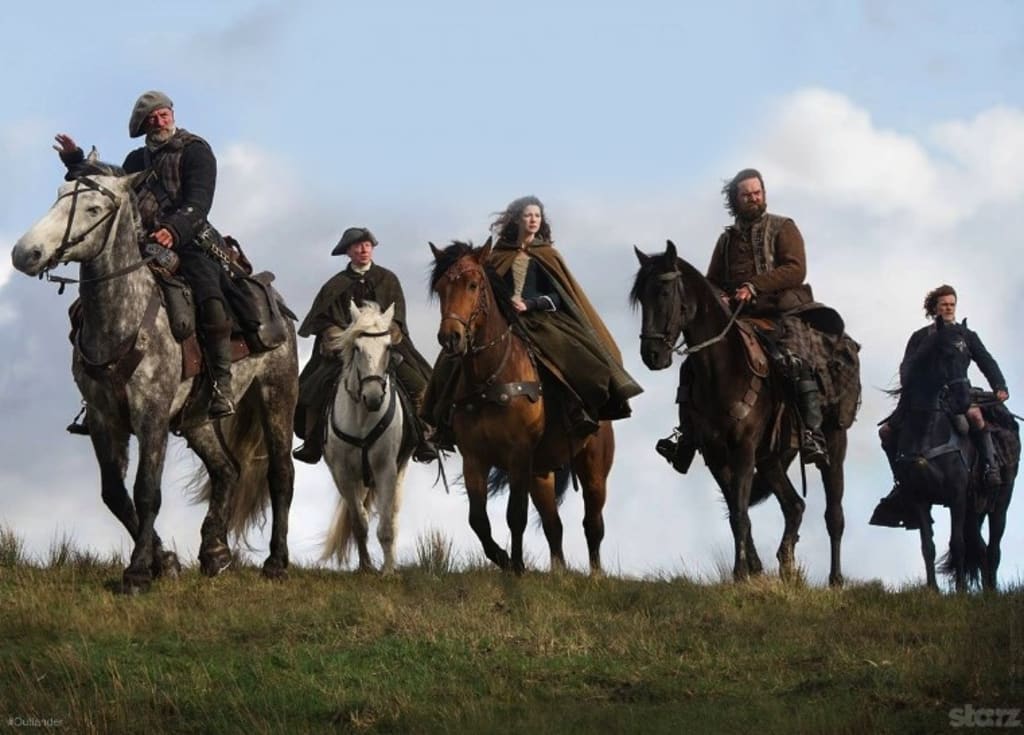
HORSES ARE PREDICTABLY UNPREDICTABLE
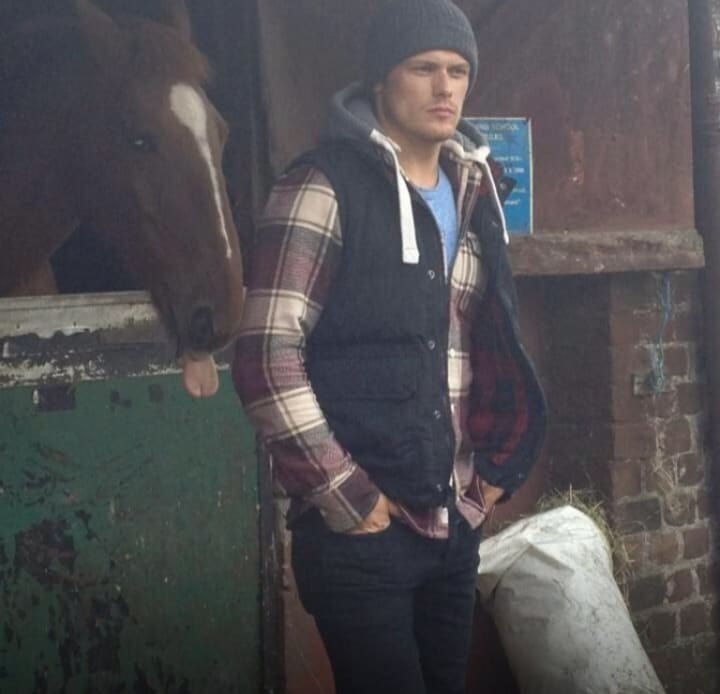
Horses are BIG and, if you are not familiar with horses, they can be intimidating and seem unpredictable. The horses used in a TV series or a movie need to be appropriate for the nervous and inexperienced actor as well as for the actors who ride regularly. The horses also need to be well trained so that the professional stunt men and women can do what is required. Add to that, finding horses and tack that are historically correct...because there will always be that person watching who will say, "wait, they didn't have horses and tack like that back then!"
When people think of horses and Scotland the first thing they think of is the Clydesdale Horse. Between 1715 and 1720 the 6th Duke of Hamilton imported Flemish horses in an attempt to improve the existing lines of work horses. By widespread crossbreeding with these horses, and many others, a very specific type of horse was developed. It was not until an exhibition in Glasgow in 1826 that the name “Clydesdale” was used for this type of horse that had been bred in the Lanarkshire district where the Clyde River flows through the region. By 1840, the Scottish draught horses and the Clydesdale were the same. In 1877, the Clydesdale Horse Society of Scotland was established. So kudos to Outlander for not using Clydesdale horses in the series - the breed would have been unknown in the late 1700s. But another type of draft horse was known in Scotland at the time. It was the Percheron.
DOUGAL MACKENZIE'S HORSE
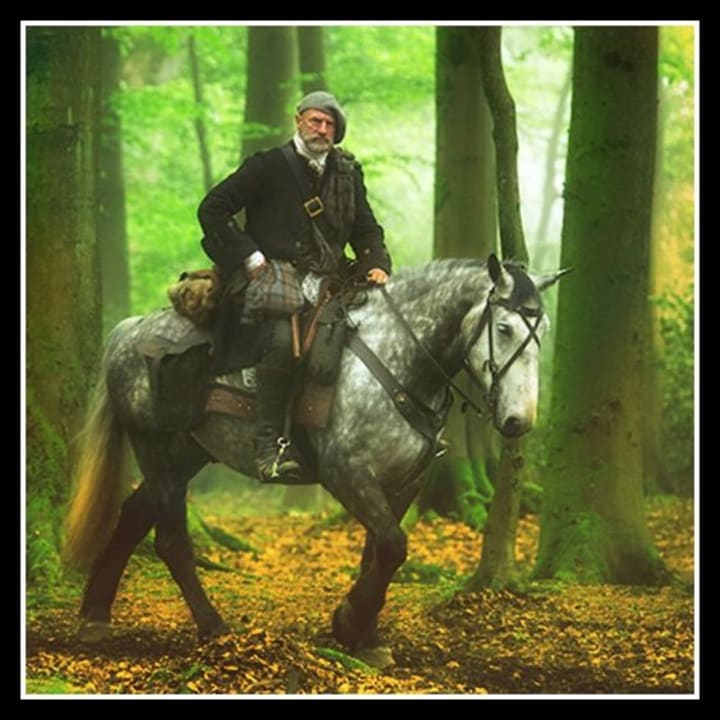
In the 1500s, King Louis XII of France (reign 1498-1515) gifted James V of Scotland (reign 1513-1542) with native French horses; most likely these horses were a type of draft horse such as the French Percherons. The horse that Dougal MacKenzie rides appears to be a Percheron. The average clansman was a farmer who spent most of his time tending to fields or livestock so it makes sense the Dougal MacKenzie would have a draft type of horse. The Percheron breed derives its name from the Perche region in France where the breed originated. It is known to be one of the oldest horse breeding areas in the world. The first known records for this breed of horse are from the 8th century. The Percheron, like most heavy horse breeds, served primarily as a work horse. It was used on farms, pulling carts and was also used as a warhorse.
FROM PERCHERONS TO PONYS
From the trade routes to the battlefield to the farm, horses have been an important part of human history for over six thousand years. It’s hard to imagine, in this age of cars and orbiting space stations, that a horse could be so important to human history. Through the centuries, countries and continents changed their ruling classes and borders many times via warfare on the back of a horse. Starting in the 1500s horsemanship was considered an art much the same as music, painting and literature. No nobleman’s education was considered complete until he acquired the art of equitation. Jamie made sure of this when he taught young Willie how to ride.

Scotland and ponies are synonymous. Ponies have been native to Scotland since before the Ice Age. The ponies found on some of the Scottish Isles have been there for centuries. Willie most likely would have learned to ride on what we call today a Highland Pony. Although referred to as a ‘breed’, and since at least the 1880s bred through a studbook, Highland Ponies during the era of Outlander were not created by controlled breeding. Highland Ponies of today are descendants of the crofters’ ponies used in the Scottish Highlands. The Highland Pony was Scotland's original all purpose horse and is still sought after today due to its versatility. Outcrosses of the native Highland Pony with Percherons were recorded in the 1500s. In the 1600s and 1700s Highland Ponies were crossed with Spanish horses. The nobles were very enamored with the Spanish horses. They often had their portraits painted on a Spanish horse.
I NEED A HORSE FOR A QUICK GET AWAY!

The Battle of Culloden is often misrepresented as a bunch of hot-tempered, ill prepared Scots against the sophisticated British. Outnumbered but not outgunned, cavalry proved the downfall of the Scots. It was not British musket ball that brought down kilted swordsmen as much as British dragoons (cavalry trained for combat with swords while mounted) that cut down Jacobite musketeers. Recent archeological evidence has shown that the Scots actually fired more musket balls than the British.
One of the first acts of the British after the Battle of Culloden was to try and catch the Prince himself, who had eluded them by slipping away from the battlefield while the fighting was still going on. He fled the mainland on horseback and made for the Hebrides, outwitting both a massive military cordon and a reward of 30,000 pounds which had been offered to anyone to betray him. At one point he even disguised himself as a female Irish serving maid. Like most nobles at the time, portraits of Bonnie Prince Charlie often depict him on a Spanish horse. It was probably more likely though that he eluded the British on a less noble looking horse.

A NOBLE HORSE FOR JAMIE

Jamie's horse, Donas, is portrayed by a Friesian horse in Outlander. Friesians are often used in TV series and in movies because they are quite flashy looking. However, it is highly unlikely that a Scottish clansman of the 1700s would have a Friesian. The Friesian is a horse breed originating in Friesland, in the Netherlands. German knights who fought in the crusades used a heavy horse that was an ancestor to the Friesian. These horses were improved, in terms of range of movement and stamina, thanks to the influence of Spanish horses that took place when Spain took control of the Netherlands throughout the 16th and 17th centuries.
MURTAGH'S HORSE

The horse that Murtagh rides in Scotland is also a Friesian. Even though historically inaccurate... if one man in a kilt on a flashy Friesian is eye candy, then why not two!?
CLAIRE'S HORSE - BRIMSTONE

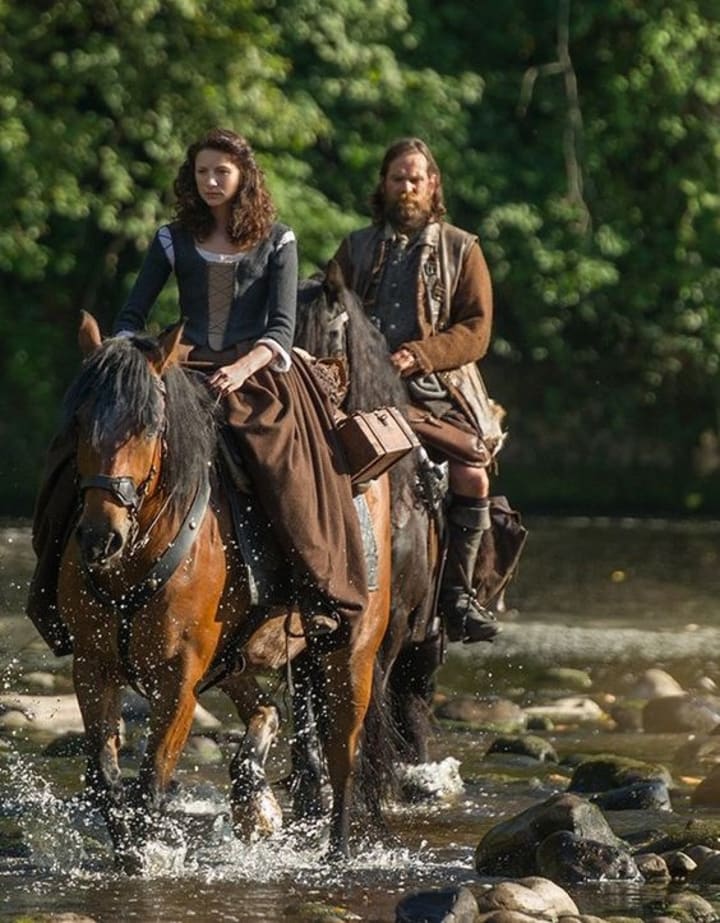
Claire meets her horse, Brimstone, in The Gathering in season 1. In that episode Claire and Rupert head to the stables to choose a mount for the next day's hunt. Claire explains in voiceover that she wants a gentle mount to use in her escape as it has been years since she has ridden a horse. She tells Alec, the Master of Horse at Castle Leoch, that she has come to get a mount for the next day's hunt, which she, as castle healer, is to attend. He leads her to a filly with the unlikely name of Brimstone. Alec assures Claire the horse is misnamed, saying, "its like calling a big man wee." He assures Claire that Brimstone is really a good, gentle horse that will turn for home at the first opportunity. With that description, it is most likely that the horse she would have been given would be a Garron. A Garron is a type of a small sturdy horse or pony. In Scotland, a Garron is one of the types of Highland Pony. It is the larger, heavier type bred on the mainland. The Garron was used in farming, especially in the Highlands. These horses were valued for their hardiness and ability to work on slopes. Highland deer-stalking estates kept Garrons to bring the stags off the hill.
HORSES IN FRANCE


While in France, Claire and Jamie traveled in carriages more than on horseback. The carriage that Jamie and Claire use most often is a servant driven coach with a rear seat for footmen. At the time, France had a wide variety of horses to choose from and accordingly, horses were designated as either saddle horses or carriage horses.
Louis XIV became King of France when he was only four and a half. He was king from 1638 to1715. Louis XIV is best known for the magnificent palace that he built at Versailles. He loved horses and built extravagant stables at Versailles. The Versailles stables could house over 700 horses and had over 30 carriage buildings. At the end of his reign he had 1,700 horses! In the Small Stables at Versailles, the horses were organized according to whether they were used by the King or for carriages. In the Great Stables there were hunters which were ridden for hunting and there were riding school horses. Almost all of the horses in the stables at Versailles came from England, Ireland, Spain, North Africa and northern Europe. The horses were considered to be the most elite collection of horses any place in the world at the time. In political terms, the King’s horsemanship skills were a symbol of his ability to govern well.
The next king, Louis XV, reigned from 1715 to 1744. He recognized that there needed to be reforms but continued the extravagant lifestyle of Louis XIV. In 1744, Jamie and Claire meet with King Louis XV when they attend the King's lever (daily opportunity of accessibility to the monarch) at Versailles. Louis XVI was king from 1744 to 1789. He was married to Marie Antoinette, the daughter of the Emperor of Austria. The extravagant lifestyle of the King and aristocrats continued.... and we all know what happened next!
FINLEY - JAMIE'S HORSE IN AMERICA
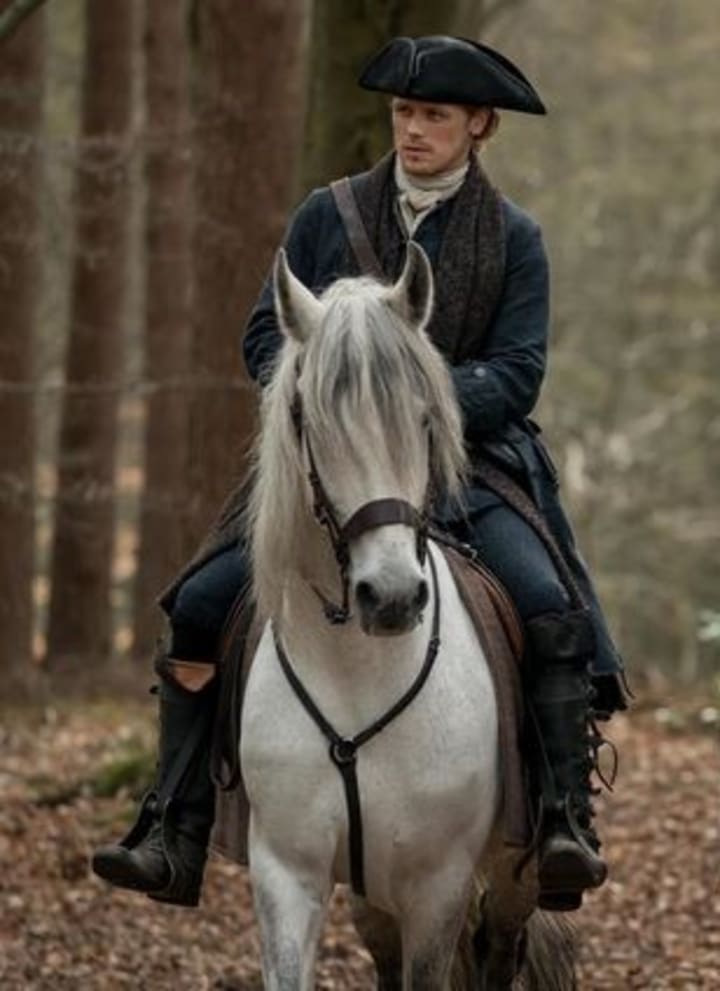
Hard as it may seem to believe, there were no horses in the Americas until the explorers and colonists brought them starting in the 1500s. The Spanish brought their magnificent Spanish horses; some breeds of horses in Mexico and Central and Latin America are descendants of these horses. Many of the feral mustangs in the American west are also descendants of these horses. The colonists brought their native horses to America. In the early Americas many of the horses brought from Europe were small. The Dutch horses were just over 14 hands and the English horses were under 13 hands. Descendants of many of these small horses are feral horses living today in the barrier islands in North Carolina's Outer Banks. Settlers soon learned that a larger, more powerful and more versatile horse was needed. To foster quality in American horses, as early as 1668, the court of Massachusetts decreed that only horses “of comely proportions and 14 hands in stature” could graze on town commons.
Travel was difficult in early America. There were long distances between towns and a lack of roads. The ambling horse was very desirable since it was very comfortable to ride for great distances on uneven terrain. Ambling horses are also known as “gaited” horses. There are several 4-beat "ambling" gaits that are approximately the speed of a trot or pace, though smoother to ride. Imports of Hobbies from Ireland along with English Running Horses were very popular in the Americas. While gaited horses became extinct in England and in Ireland, in America these saddle horse traits have been kept alive even today. The Narragansett Pacer (now extinct) was known as a saddle horse with great endurance that provided a comfortable ambling gait that was sure-footed. At one time Rhode Island was the breeding capital of America; farms had as many as 1,000 Narragansett Pacers. These Rhode Island horses were shipped to all of the sea-coast colonies as well as to the islands of the Caribbean for use on the plantations.
Eventually America had many breeds of horses but not during the time of Outlander; Figure, the horse owned by Justin Morgan, was born in Massachusetts in 1789. The Morgan horse is still very popular today and many breeds of American horses trace their roots to the Morgan horse.
The horse that Jamie's aunt gives to him appears to be a Spanish horse. While highly unlikely that there would have been any horses of this type in North Carolina in 1767, his aunt was well connected and wealthy and well, let's face it, Jamie looks amazing on a noble Spanish horse!
LAST BUT NOT LEAST, CLARENCE THE MULE


When Jamie and Claire leave his Aunt Jocasta's River Run plantation in North Carolina, she gifts them with horses and a mule. The cross that has been most significant in human history is the one between horses and donkeys to create the mule. Mules come in every size and shape imaginable; miniature to mammoth. Mules have played a key role in the development of the world. Without their hard work, stamina, strength and patience over hundreds of years prior to mechanization, much of the modern world would not exist: they helped to construct it!
In the mid-1700s the best donkeys in the world were in Spain. They were animals of remarkable strength and endurance, which the monarch had long guarded by prohibiting their export. Donkeys were already in America, as they came over with the early explorers, but they were quite small. In Outlander Clarence is a pretty small mule. After the Revolutionary War, George Washington started a program to develop a larger, stronger mule to be used on farms to replace horses in the field. The very best donkeys at the time were the Andalusian donkeys of Spain. Washington wrote to King Charles III of Spain requesting permission to purchase good quality breeding stock. In 1785, the census for Mount Vernon listed 130 working horses and no mules. In October of 1785, a ship docked in Boston harbor carrying a gift from the King for Washington. The King sent two fine Spanish jacks and three jennies to Washington. One of the Jacks died in route and the surviving donkey was named “Royal Gift” in honor of the King. To Washington’s surprise, Royal Gift refused to perform his duty on the 30 plus mares awaiting his services. Undoubtedly, the exhaustive trip to a foreign land full of American mares distracted this royal gift. Fortunately, the following spring, Royal Gift responded positively to his duties and the American mule-breeding business was under way. By 1799, the year President Washington died, Mount Vernon listed 25 horses and 58 mules. It didn't take long for Americans to discover the value of the mighty mule.

In 1914, Germany had 4 million horses and mules. England and France together had 6 million, but America had 25 million! 150 years after Jamie and Claire were in North Carolina, America had more horses and mules than Europe. Hundreds of thousands of horses and mules used by the Allies in World War I came from the United States. Mules were the unsung heroes of World War I. According to Brigadier-General T.R.F. Bate, British Remount Commission, “Great as has been the success of the American gun horse, still greater, though perhaps less appreciated, have been the war qualities of the American mule...probably the most serviceable and satisfactory animal used in the war.”

FURTHER READING AND SOURCES
https://www.artbycrane.com/horse_breeds/pony_breeds/highland.html
https://www.percheronhorse.org/percheron_origin/
https://h2g2.com/edited_entry/A35669398
https://www.historyextra.com/period/georgian/myths-facts-battle-of-culloden-jacobites-bonnie-prince-charlie-stuarts/
https://militaryhistorynow.com/2018/11/14/the-battle-of-culloden-its-time-to-rethink-britains-storied-triumph-over-jacobitism/
https://www.britishbattles.com/jacobite-rebellion/battle-of-culloden/
https://www.scotland.org.uk/history/bonnie-charlie3
https://www.nms.ac.uk/explore-our-collections/stories/scottish-history-and-archaeology/the-jacobite-challenge/the-jacobite-challenge/targe-presented-to-bonnie-prince-charlie/
https://en.wikipedia.org/wiki/Garron
https://www.geriwalton.com/vehicles-found-france-1700-1800s
https://www.scotsman.com/arts-and-culture/film-and-tv/outlander-what-was-life-really-highland-clansmen-1481531
https://www.mulemuseum.org/history-of-the-mule.html
https://www.columbiadailyherald.com/arti¬cle/20120328/LIFESTYLE/303289941
About the Creator
Mary Chris Foxworthy
Mary Chris combines her life-long love affair with horses with a passion for keeping history alive. She is an active competitor at horse shows and is known for her work as a research writer for the Equine Heritage Institute.

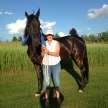




Comments
There are no comments for this story
Be the first to respond and start the conversation.